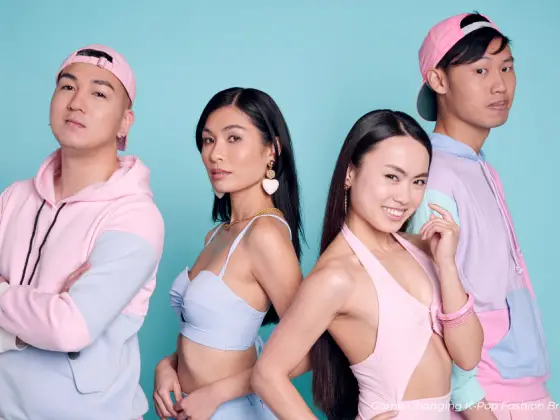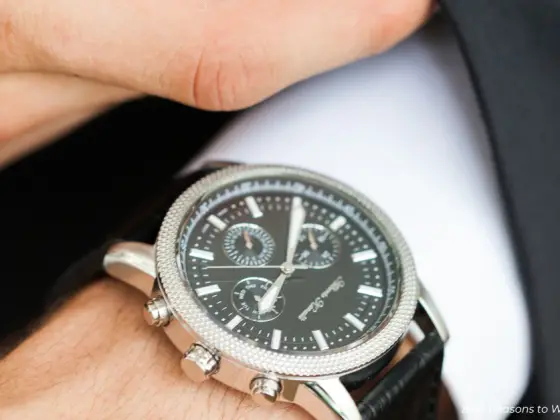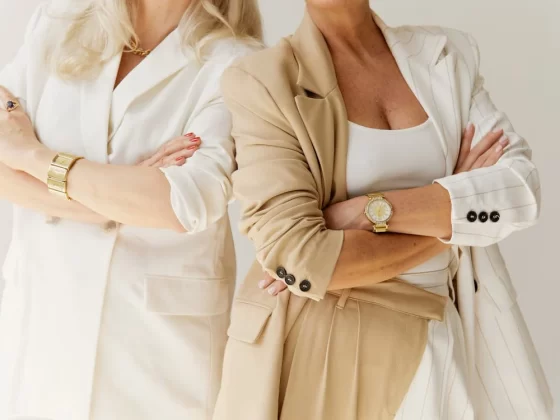 The concept of unisex clothing is more recent than it may seem. Its roots can be traced to history, evolving through various cultural shifts and societal transformations. From its early groundbreaking steps to its current mainstream status, unisex clothing has symbolized changing attitudes toward gender and self-expression. Let’s explore this fascinating journey from its beginnings to its present-day prominence.
The concept of unisex clothing is more recent than it may seem. Its roots can be traced to history, evolving through various cultural shifts and societal transformations. From its early groundbreaking steps to its current mainstream status, unisex clothing has symbolized changing attitudes toward gender and self-expression. Let’s explore this fascinating journey from its beginnings to its present-day prominence.
The Rise of Gender-Neutral Fashion: A Historical Perspective
Early Beginnings: The Origins of Gender-Neutral Fashion
Unisex clothing began to develop in the early 19th century when strict gender norms were in place. In 1824, the New Harmony Socialist Utopian Community gained attention for permitting women to wear pants. This was a groundbreaking departure from societal expectations and was considered scandalous then. Although the decision faced considerable resistance, it laid the groundwork for essential changes in fashion and gender norms.
A more impactful movement for gender-neutral fashion came with the efforts of Amelia Bloomer, an early suffragist and activist. In the mid-19th century, Bloomer advocated for women’s right to wear pants, a practical and comfortable garment compared to the era’s restrictive dresses. Her campaign led to adopting a pants style worn under short skirts, which became known as “bloomers.” Bloomer’s efforts were vital in challenging the established norms, although the broader acceptance of pants for women took several more decades.
World War II’s Impact: A Temporary Shift in Gender Norms
World War II was a critical turning point for unisex clothing, even if it was just temporary. As men fought, women entered the workforce in record numbers. This wartime shift created a practical need for clothing suitable for factory work and other roles traditionally held by men. Women began wearing pants and overalls, essential for safety and functionality in industrial settings.
This period saw a brief but notable rise in unisex clothing. Women’s need for practical attire during the war led to the widespread adoption of garments previously associated with men. However, the war’s end brought a return to pre-war gender roles. Men resumed traditional roles, and women were encouraged to return to domestic life. Hollywood stars like James Dean and Elizabeth Taylor reinforced these gender distinctions, with Dean epitomizing rugged masculinity and Taylor representing classic femininity. The influence of these stars further entrenched traditional gender norms in fashion.
The 1960s Revolution: Unisex Fashion Takes Off
The 1960s were a revolutionary period for unisex clothing, coinciding with significant cultural and social changes. The sexual revolution, along with a broader redefinition of age, gender, and class, set the stage for a more inclusive approach to fashion. This era saw a growing interest in clothing that transcended traditional gender boundaries.
Fashion designers responded to these changes by experimenting with unisex designs. Pierre Cardin, for example, was known for his avant-garde approach to fashion, including unisex clothing. His collections featured bold, geometric shapes and a futuristic aesthetic that challenged conventional gender norms. Cardin’s work reflected the broader cultural shifts of the 1960s, embracing the idea of clothing that was not limited by traditional gender roles.
The 1960s also saw the emergence of the mod and hippie movements, which embraced unisex clothing. The mod subculture favored sleek, androgynous silhouettes, while the hippie movement popularized relaxed, bohemian styles. Both movements contributed to normalizing unisex clothing, reflecting a broader desire for freedom and self-expression.
The 1970s and 1980s: A Trend Rollercoaster
Fluctuating trends in unisex fashion characterized the 1970s and 1980s. The 1970s, influenced by the counterculture movement, saw a resurgence of unisex clothing. Bell bottoms, tie-dye shirts, and androgynous silhouettes became popular among men and women. This period was marked by a sense of rebellion and experimentation, reflected in fashion.
However, the 1980s brought a shift towards more distinctly gendered clothing. The emphasis on luxury and excess during this decade led to the resurgence of traditional gender-specific attire. With their sharp lines and strong shoulder pads, power suits became symbols of 1980s fashion. This period reinforced conventional gender roles and saw a decline in the popularity of unisex clothing.
Despite this, the seeds of unisex fashion planted in earlier decades continued to influence the industry. In the 1980s, Madonna famously blended masculine and feminine styles, pushing against traditional fashion norms. Her influence paved the way for future experimentation with unisex and androgynous fashion.
The 1990s and 2000s: Unisex Fashion Gains Ground
The 1990s were a pivotal decade for unisex fashion. The decade saw the rise of grunge and streetwear, often featuring unisex styles. Designers like Calvin Klein and Jean-Paul Gaultier popularized androgynous silhouettes, merging traditionally male and female styles. The popularity of oversized clothing and casual, relaxed styles contributed to the normalization of unisex fashion.
The 2000s continued this trend, with many designers and brands exploring gender-neutral clothing. Fast fashion and the influence of street style played a role in this evolution. Brands like American Apparel and Uniqlo offered unisex collections that catered to a diverse audience, making it easier for consumers to find stylish and inclusive clothing options.
The rise of athleisure also contributed to the popularity of unisex clothing. Brands like Nike and Adidas created sportswear for everyone, regardless of gender. Athleisure’s emphasis on comfort and functionality aligned with the broader unisex fashion movement, making it a staple in many wardrobes.
The Modern Era: Unisex Clothing Hits the Mainstream
In recent years, unisex clothing has moved from the fringes of fashion to the mainstream. Contemporary designers and brands have embraced the concept of gender-neutral fashion, reflecting a broader cultural shift towards inclusivity and self-expression. Today, unisex clothing is a trend and a significant aspect of the fashion industry.
Telfar, a brand founded by designer Telfar Clemens, has become a leading force in the unisex fashion movement. Known for its inclusive approach and minimalist designs, Telfar’s collections feature versatile pieces that appeal to people of all genders. The brand’s iconic shopping bag, available in various sizes and colors, has become a symbol of gender-neutral fashion.
Sies Marjan, another notable name in contemporary fashion, has also embraced unisex clothing. The brand’s collections often feature fluid, genderless designs that challenge traditional fashion norms. Sies Marjan’s innovative use of color and fabric further underscores the brand’s commitment to inclusivity and creativity.
The rise of sustainable fashion is another significant trend shaping unisex clothing today. Many contemporary unisex brands prioritize eco-friendly materials and ethical production practices. This focus on sustainability aligns with the values of inclusivity and social responsibility that underpin the unisex fashion movement. Brands like Stella McCartney and Reformation are leading the way in this regard, offering stylish and environmentally conscious options.
The influence of social media must be noticed in the modern unisex fashion landscape. Platforms like Instagram and TikTok have played a significant role in promoting unisex clothing. Social media’s visual appeal lets people flaunt their style and connect with others with the same fashion tastes. The democratization of fashion through social media has further fueled the popularity of unisex clothing, making it more accessible and widely accepted.
Unisex Clothing and Cultural Shifts
The growing popularity of unisex clothing reflects broader cultural shifts towards inclusivity and self-expression. As society embraces diverse gender identities and expressions, unisex fashion is breaking traditional norms and promoting a more fluid approach to style.
Unisex clothing also aligns with the increasing emphasis on comfort and practicality in fashion. As people prioritize functionality and ease in their everyday lives, unisex designs offer a versatile and practical solution. The focus on comfort is reflected in relaxed silhouettes, adjustable designs, and versatile garments.
The rise of gender fluidity and non-binary identities has also influenced the popularity of unisex clothing. As more individuals identify outside traditional gender categories, the demand for apparel transcending binary definitions has grown. Unisex fashion allows people to express their identities without being confined by traditional gender norms.
Challenges and Future Directions
Despite its growing acceptance, unisex clothing still faces challenges. One of the main challenges is market perception. While unisex fashion is gaining traction, some consumers and designers may still view it as a niche or unconventional trend. Overcoming these perceptions and ensuring that unisex clothing is embraced as a mainstream option remains a crucial challenge for the industry.
Another challenge is the need for design innovation. As unisex clothing becomes more mainstream, there is a growing demand for innovative designs that cater to diverse preferences. Designers must continue exploring new styles, fabrics, and cuts that offer aesthetic appeal and practicality.
The future of unisex clothing looks promising, with continued technological advancements and sustainability likely to play a significant role. Integrating technology, such as smart fabrics and adaptive clothing, can revolutionize unisex fashion. Additionally, the focus on sustainability will continue to drive the development of eco-friendly and ethically produced garments.
Best Gender-Inclusive Clothing Brands
If you’re looking for styles that let you express who you truly are, here’s a breakdown of some of the best gender-inclusive clothing brands that are making waves in the industry. These brands prioritize inclusivity, quality, and the idea that fashion should be free of labels, allowing you to embrace fashion in your own way.
1. Telfar: Accessible Luxury for All
Telfar, founded by Liberian-American designer Telfar Clemens in 2005, has become a global symbol of inclusivity. The brand’s tagline, “It’s not for you, it’s for everyone,” encapsulates its commitment to creating high-fashion items that are accessible and gender-neutral. One of the standout pieces from Telfar is their iconic Shopping Bag, often dubbed the “Bushwick Birkin,” which is designed to be a unisex item, appealing to people across the gender spectrum. This bag is a status symbol in gender-inclusive fashion because it is stylish, practical, and, most importantly, meant for everyone—regardless of gender.
2. Big Bud Press: Embracing Vibrancy and Inclusivity
Los Angeles-based Big Bud Press is all about inclusivity, bright colors, and playful designs. With a focus on ethically made, gender-neutral clothing, the brand offers sizing from XXS to 7XL, making it one of the most inclusive fashion lines when it comes to body diversity. Their bold, vintage-inspired unisex jumpsuits, pants, and T-shirts are staples that have become popular across various demographics.
3. Wildfang: Feminist-Inspired Gender-Neutral Clothing
Founded in Portland, Oregon, Wildfang was created with the mission of deconstructing gender norms in fashion. The brand’s tagline, “We Are Not Here To Be Pretty,” underscores their feminist roots and commitment to creating powerful, gender-neutral designs. Wildfang offers everything from power suits to casual everyday wear, encouraging people to express their bold, authentic selves.
4. Phluid Project: Leading the Gender-Free Movement
The Phluid Project, based in New York City, is more than just a clothing brand—it’s a movement. Phluid is committed to creating a world where gender-free clothing is the norm, and it combines fashion with activism to support LGBTQIA+ communities. The brand’s collections focus on casual, street-style apparel that is designed without any gendered expectations, allowing everyone to wear what they feel best represents them.
5. TomboyX: Breaking Boundaries in Underwear
If you’re looking for gender-neutral clothing that goes beyond outerwear, TomboyX is a brand that should be on your radar. Known for its comfortable and inclusive underwear, TomboyX offers a wide range of intimates designed for people of all genders and body types. From bras to boxer briefs, the brand focuses on providing comfort, functionality, and style without the constraints of gendered sizing.
Conclusion
Unisex clothing has transitioned from a groundbreaking challenge to traditional gender norms into a mainstream fashion movement fueled by changing views on gender and self-expression. Originating from early efforts like women’s pants in the women’s community, it now enjoys widespread acceptance among consumers and designers.
Today, unisex apparel is more than just a trend; it reflects progressive gender norms and a dedication to personal expression. With the advancement in smart fabrics and adaptive clothing, the future of unisex fashion is promising, aiming for both functionality and customization. Moreover, its emphasis on sustainability positions unisex fashion as both trendy and ethical, cementing its significance in modern style.















